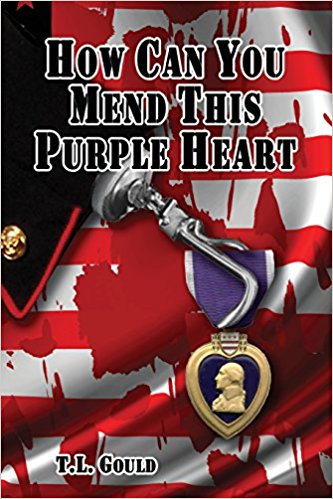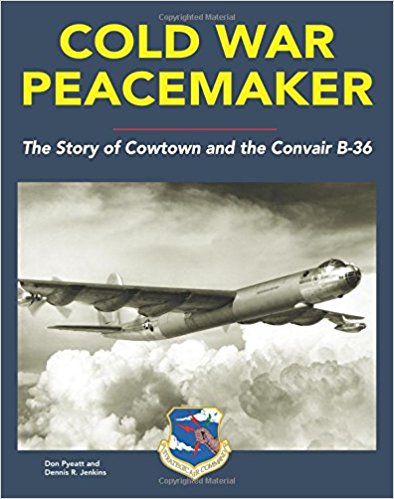MWSA Review
The 36th Division of the Texas National Guard (also known as the Texas Army, and sometimes as The Texas Gun Club), was part of LG Mark Clark's 5th Army, and was the first American unit to hit the beach at Salerno, Italy on 9 September 1943. Night amphibious landings are fraught with danger, and this assault was no exception. Italy declared an armistice as the Allied fleet was approaching the Gulf of Salerno, leaving the German forces to scramble to defend the beaches. The 5th. Army G-2 did not think there were many Germans in the area; however, the 1st Battalion's S-2 didn't agree.
The Texas Gun Club is the story of the Battle of Salerno, told through the eyes and experiences of two cousins, both outstanding platoon leaders assigned to Able Company of the 1st Battalion, 141st Infantry Regiment: 1LT. Sam Taft; and 1LT. Perkin Berger, usually referred to as Perkin throughout the book. Their mothers, twin sisters, had been killed by a hurricane in 1919. Perkin's father died in the Battle of the Marne the year before. Both were raised by Perkin's grandparents as their children, and Perkin's grandfather is referred to as "Old Perk."
1LT Taft, a huge man whose size earned him the nickname "Bear," inherited a large ranch which he was expanding. Bear and Perkin enjoyed fishing for trout in the warm Gulf waters. When his father died, Bear dropped out of college to run the ranch. Fiercely devoted to his wife, Margaret, Bear is the most cautious of the pair.
1LT Perkin Berger, smaller than Bear, but still a large man, was a student of history working on his doctorate degree, when he talked Bear into joining the Texas National Guard. Perk is the wild child of the pair. Part daredevil, he is usually too quick with a retort. Both men are natural combat leaders. The author does a good job of filling in both men's history in clearly delineated sections in a manner that does not break up the rhythm of the story.
Able Company, part of the 1st Battalion, 141st Regimental Combat team of the 36th Division was assigned to land on Blue Beach. Things quickly began to go wrong. An ensign led part of the 141st's landing crafts to the wrong beach, which became known as Blue Beach South. General Clark, acting on his S-2 opinion that the Germans weren't ready, expected to achieve surprise and landed his troops with no pre-landing bombardment. Perkin planned to be the first American soldier to set foot on the continent. When his landing craft dropped its ramp, the Germans greeted with, "Soldiers! Come on in and surrender. We've got you covered." Perkin shouted to the men in his 1st Platoon and charged through the shallow water and onto the beach. While Perk was becoming the first soldier to step on dry land at 0330 hours, the company commander was having difficulty motivating the coxswain to take his landing craft through the wall of German shells falling along the beach. By then the ensign had found Blue Beach, and the remaining elements of the 1st Battalion had landed there. Forcing the battalion commander and Able and Baker Companies to fight their way north through 500 yards of German territory to Blue Beach. Vivid descriptions of squad and platoon battles carry the reader into the heat of the battle. Perkin climbs onto a German Panzer IV tank with the intention of dropping a grenade into it, but the hatches are locked. Not easily deterred, Perkin uses a sledgehammer mounted on the tank as a weapon.
The next day, Able Company is tasked to send a reconnaissance patrol south through German and fascist territory to make contact with General Montgomery's 8th Army. 1LT Perkin Berger is selected to lead the patrol. Italy is in turmoil. The fascist Italians support the Germans and will use any opportunity to betray the patrol. Patriotic Italians help. After the armistice is declared, some Italian soldiers return home, some join the Germans, and some become looters who rape and pillage the countryside. Using the patrol as his vehicle, the author takes the reader on a journey through a war-torn country, telling the story of Italy�its people, soldiers, police, clergy, and of course the Germans. Perkin and his men encounter fascist German sympathizers, Italians who welcome Americans, German patrols, and have several realistic experiences that give the reader a real world view of conditions in a country hosting a war. Perkin leads the patrol to British 5th Division Headquarters, meets several interesting British officers, and then starts back to join Able Company. On the return trip the patrol has more adventures. The author develops several enlisted men characters. Private Kluis, a small, bookish man becomes another Audy Murphy and appears throughout the story.
While Perk is leading his patrol southward, Bear is in the village Ogliastro Cilento, where Able Company is waiting for its next assignment. The 141st is an all Texan unit, and the men have personal relationships that extend beyond the Army. Captain Ronald Ebbins, a long time foe of Bear and Perk enters the picture. Ebbins is a rear echelon officer who pointedly avoids going to the sound of battle whenever possible. Ebbins attempts to use his position to harass Bear and Perkin. While in the village, Bear meets Antoniette Bernardi, a stunningly beautiful five foot-three, hot tempered, Italian fascist and German spy. Antoniette obtains most of her information by sleeping with enemy officers and Ebbins wastes no time climbing into her bed.
The entire story takes place between 9 Sept and 14 Sept. Ebbins' and Antoniette's stories are not resolved, however, I am confident they will appear in the next book in the series. Antoniette has the makings of a fine villainess.
The Texas Gun Club is an excellent WWII war novel. Realistic, well plotted, and contains many actual events. It has found a place on my bookshelf. It describes the successes and failures of command and battle. Friendly fire, poor communications, death, destruction, courage, and valor. My only criticism is the title. I would have titled it: The Battle of Salerno, or Blue Beach South, and then added the tag, "a Texas Gun Club Novel." I am looking forward to the author's promised next novel in the series based on the 36th Division's exploits.
Reviewed by: Lee Boyland (2010)
Author's Synopsis
The Texas Gun Club is the story of two cousins' journey from south Texas to wartime Italy in 1943. Perkin Berger and Sam Taft are officers in Able Company, 141st Infantry Regiment of the 36th Division, Texas National Guard. Although the cousins are closer than most brothers, they have differing views on the war and their role in it. Perkin is excited to test himself in combat; Sam just wants to survive the war and return to Texas.
D-Day was a shambles, and then the battle went from bad to worse. While Perkin is dispatched on a reconnaissance mission down the Italian peninsula, Sam is left to shore up crumbling defenses and prevent Salerno from becoming another Dunkirk.




















